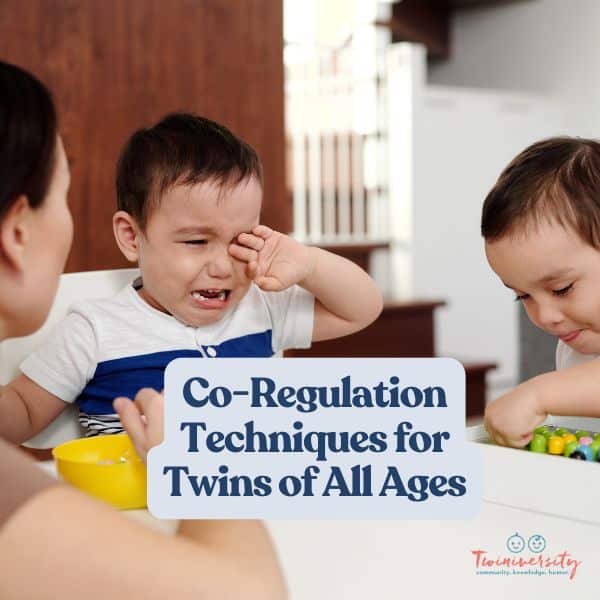Last updated on March 8th, 2024 at 10:03 am
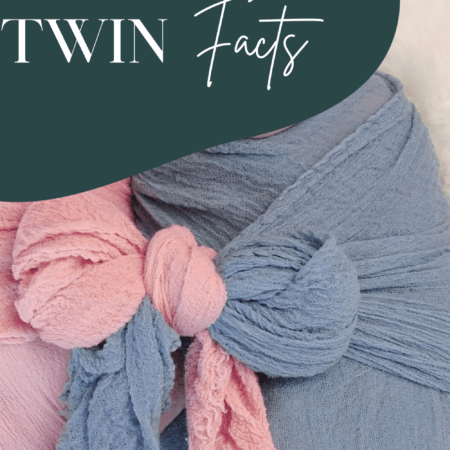


Did you just find out you’re pregnant with fraternal twins? Not sure what that even means? Keep reading and we’ll fill you in!
Fraternal twins are two different children of the same parents, who can be either male or female and they happen when two separate eggs are fertilized by two different sperm cells. These children often look different from one another. Fraternal twin siblings also share 50% of their genes with one another which is why they share some features like eye color, hair color or height.
They can also look very similar. They can have the same eye and/or hair color or be of similar heights, just like many other siblings.
Are you confused yet? How is this different from identical twins? What type of twins are yours? Do you know?
Not to worry. We’ll break it down for you and address the common myths so you can get your head around a fraternal twin pregnancy.
Learn what fraternal twins are, what they aren’t, and how they differ from identical twins starting at conception.
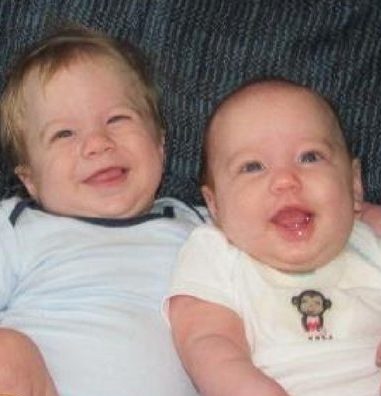
What Are Fraternal Twins?
Fraternal twins are two different children of the same parents, who can be either both male, both female or one of each. Fraternal twins occur when two separate eggs are fertilized by two different sperm at the same time, forming two separate embryos.
These twins are formed independently. That means the two embryos that form have their own placenta and amniotic sac. These twins are often referred to as dichorionic diamniotic. Di di twins can be either dizygotic twins (fraternal) or monozygotic twins (identical).
Most people don’t realize that while all dizygotic twins are di di, not all di di twins are dizygotic twins. An estimated 30% of all di di twins are actually monozygotic twins, commonly known as identical. The only way you can know for sure if they are the same gender is to do a DNA test. Of course, they are fraternal twins if they are boy/girl twins.
DNA test kits are easy to purchase online, and the test is a simple swab. Try a quick search in your local twin club to see which one might be best for your family. They are typically around $100 and have a turnaround of just a few short weeks.
Do Fraternal Twins Have the Same Blood Type?
Fraternal twins do not necessarily have the same blood type because they come from separate fertilized eggs and can inherit different genetic traits from their parents.

Need some twin parent friends? Get the support you need with a Twiniversity Membership. Benefits include a monthly twin parent club meeting on Zoom, access to a private Facebook group just for twin parents, and a video library of twin parenting lessons. Visit Twiniversity.com/membership to join today!
The Uniqueness of Fraternal Twins
These children often look different from one another. The thing that we find most fascinating about fraternal twins is that genetically speaking, they are no more alike than any other pair of siblings but they are in the womb at the same time!
If you think about it, it is pretty spectacular that these special twins are two independent babies who form at the same time in the same womb. How cool is that? The true meaning of wombmates!
How Do Fraternal Twins Differ From Identical Twins?
Fraternal twin siblings also share 50% of their genes with one another which is why they share some features like eye color, hair color or height. Since only half of their DNA is the same, they may have many different features, just like any other siblings might.
Identical twins share far more of their DNA. For example, my identical twins share just over 99% of their DNA. Thats why almost all identical twins have the same hair color, eye color, skin tone, and are of similar heights.
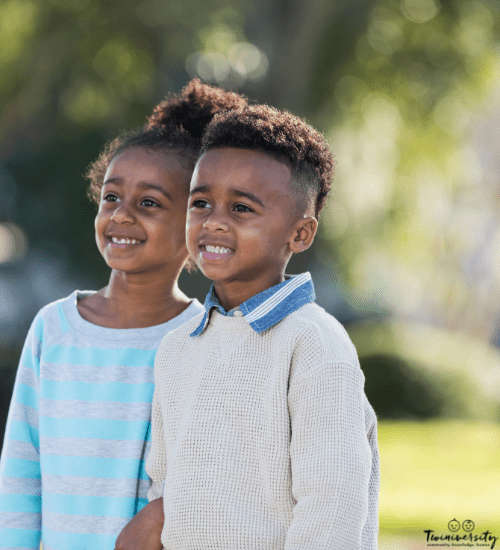
Do Fraternal Twins Look Alike or Different From One Another?
Fraternal twins are not identical twins because they are two different children that were conceived when two separate eggs were fertilized by two different sperm cells at the same time. Identical twins form when a fertilized egg splits in two, so one egg, one sperm, two babies.
For that reason, fraternal twins may be very similar in looks, but are mostly easier to tell apart than their identical counterparts. If you have seen a set of twins where one of them is tall and red-headed and the other is unusually short with blonde hair, they are fraternal twins.
On the other hand, if you have di di twins who you were told were fraternal without DNA testing done, and you and others have a hard time telling them apart as they get older, you might want to consider that they might be identical and order a twin zygosity test kit.
Can an Ultrasound Determine if Twins Are Fraternal?
Ultrasound can determine if your babies are identical or fraternal by examining the number of placentas and amniotic sacs present in the pregnancy. Identical twins can share a single placenta (monochorionic) or have separate placentas (dichorionic). Fraternal twins always have separate placentas and amniotic sacs, making it clear that they are not identical.
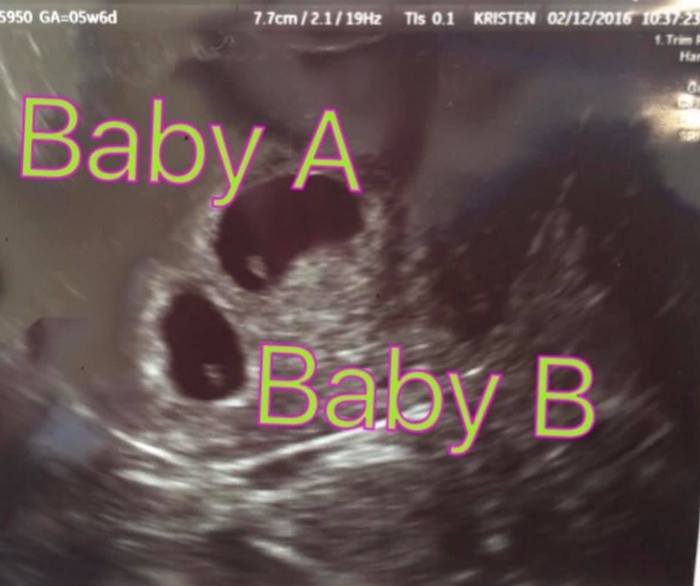
Are Fraternal Twins Actually Twins?
Twins are defined as two babies that are produced in the same pregnancy. So, yes! Fraternal twins are definitely “actual” twins, despite their different genetic makeup!
Dizygotic twins differ in genetics, not in gestation, per say. For example, I have a younger brother who is about 4 years younger than I am. He and I are no more or less alike than dizygotic twins.
What makes fraternal twins so special is that they are actually growing inside their mother’s womb at the same time. They each grow independently of one another. These ones really are something special, aren’t they?

Want to get weekly emails about your twin pregnancy? Sign up for the Twiniversity email list! Subscribe today to get emails about giveaways, events, weekly article roundups, and more! We’ll be sending you a weekly twin pregnancy email to keep you on track with your pregnancy to-do list! Click here to learn more… and while you’re at it, check out our expecting twins classes and personal twin parent coaching services.
Are Fraternal and Identical Twins the Same Thing?
No, fraternal twins and identical twins are not the same thing. They are both twin types, true, but otherwise they are very different from one another. Identical twins share almost all of their DNA. Fraternal twins share about half of their DNA. So the two types of twins are different on a biological level.
It is also important to note that your medical care may differ if you are carrying a monozygotic (identical twin) pregnancy. Identical twins come with greater health risks. You would need more scans and appointments to stay on top of any health conditions or concerns that crop up to affect you or your babies. A di di pregnancy is lower risk so having fraternal twins doesn’t have to be so scary. With fraternal twins, your risk a premature birth isn’t much higher than any singleton pregnancy. That’s great news!
What Are My Chances of Having Fraternal Twins?
Your chances of having dizygotic twins is pretty low, for the most part. There are a few genetic and environmental factors that can make a fraternal twin pregnancy more likely. These factors include:
- A family history of twins.
- Advanced maternal age (over 35)
- Having African heritage
- Certain fertility treatments or fertility drugs (Such as IVF or Clomid)
- Being overweight
- Being taller than average

Do Fraternal Twins Come From the Mother or the Father?
Twins come from the mother’s side. Fraternal twins are often the product of hyper ovulation which is passed from mother to daughter, and so on. So if your husband is a twin, it will make no difference in your odds of giving birth to twins. That’s not to say it couldn’t happen. It’s just no more likely than anyone else.
Can Fraternal Twins Be Adopted Together?
Yes, twins can be adopted together. It would probably be best for twins to be adopted out together and we have spoken with a few families who have adopted twins together. Keeping them together is obviously a good idea, whenever possible.
Twins only make up about 3% of the population and dizygotic twins make up a large percent of those twins. The vast majority, actually. So when you consider twinning rates, it is pretty unlikely you will have twins. But if you do have twins, when it comes to the type of twin pregnancy, chances are they are fraternal. Knowing about the types of twins and the twin birth rate before you give birth to twins of your own will be helpful in the future. There is a lot of misinformation out there about fraternal twins. Hopefully you have a better handle on the different twin types and how they happen.
Famous Fraternal Twins

- Mary-Kate and Ashley Olsen
- Tia Mowry and Tamera Mowry
- Rami Malek and Sami Malek
- Joel Madden and Benji Madden
- Jenna Bush Hager and Barbara Bush
- Vin Diesel and Paul Vincent
- Alanis Morissette and Wade Morissette
- Scarlett Johansson and Hunter Johansson
- Jon Heder and Dan Heder
- Ashton Kutcher and Michael Kutcher
- Kiefer Sutherland and Rachel Sutherland
- Jason London and Jeremy London
- Gisele Bündchen and Patricia Bündchen
- Dylan and Cole Sprouse
Related Posts
- What Are Di Di Twins?
- Identical or Fraternal? Doing a Twins DNA Test
- The Biology of Twins: Do You Know The Science Behind Your Twins?



